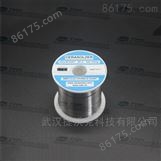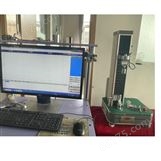當前位置:儀器網 > 產品中心 > 物性測試儀器及設備>其它物性測試儀器及設備>其它> ISO 7-2 R錐度環規
返回產品中心>ISO 7-2 R錐度環規ISO 7-1錐度塞規ISO 7-2 Rp/Rc錐度塞規美國GSG螺紋量規



關注:惠氏錐管螺紋標準EN 10226或者國際標準ISO-7-2
ISO 7-2: Pipe Threads where Pressure-Tight Joints are made on the Threads; Part 2: Verification by means of Limit Gauges
ISO 7-2:2000 Foreword
This second Edition cancels and replaces the first edition (ISO 7-2:1982).
ISO 7-2:2000 Introduction
This revision of ISO 7-2 has been undertaken with the aim of providing a unified gauging system (1)(2) which could be adopted worldwide and thus eliminate the differing results (3) obtained with the use of gauges in accordance with ISO 7-2:1982 and existing national practices. This revision also includes details of plain ring gauges to provide additional means of checking ISO 7-1 external threads and a parallel modified thread form check ring gauge for checking taper full form treaded plug gauges.
ISO 7-2 Scope
This part of ISO 7 specifies a process using limit gauges, for the validation of taper internal and external threads and parallel internal threads on piping systems components and other products, the dimensions and tolerances of which are detailed in ISO 7-1. The gauging system described may not be suitable, without special precaution, for gauging of threads on injections moulded plastic workpieces. This part of ISO 7 does not cover completely all the requirements necessary for full control of thread quality and dimensions. Additional control of tools and equipment and visual inspection during production are required to ensure complete compliance with ISO 7-1, for example the length of useful thread on internally threaded workpieces should be checked by direct measurement. Annex A gives a summary of the gauges included in this part of ISO 7, together with details of the thread elements controlled by each gauge and gauge identification numbers. In the event of a dispute over compliance with the requirements of ISO 7-1, the gauges in this part of ISO 7 are to be considered as decisive for the thread elements which they control on the workpieces.
Notes:
1. Unified gauging system: The ISO 7-2:2000 gage design was protested by Japan; UK and USA representivies on the ISO committee; regardless; the standard was ratified.
2. Gage 3 has a single point contact on the taper thread which could rapidly wear and create erroneous readings.
3. Eliminate the differing results: A laudable goal, but with tapered pipe threads an impractical goal.
4. ISO 7-1 is technically equivalent to EN 10226-1 and EN 10226-2 combined.
5. ISO 7-2 is technically equivalent to EN 10226-3
EN 10226-3; Pipe Threads where Pressure Tight Joints are made on the Threads - Part 3: Verification by means of Limit Gauges
EN 10226-3 Foreword
ISO 10226-3 is based, with editorial modifications on ISO 7-2 “Pipe threads where pressure-tight joints are made on the threads- Part 2: Verification by means of Limit Gauges”. Pipe thread gages defined by EN 10226-3 are dimensionally identical to and fully interchangeable with pipe threads to ISO 7-2.
EN 10226 has been prepared in three parts.
Part 1 and Part 2 reflect the two thread joining systems in regular use in Europe and Worldwide.
Part 1 details taper external and parallel internal pipe threads.
Part 2 details taper external and taper internal pipe threads.
Part 3 details the requirements for the gauging of pipe threads conforming to Part 1 and Part 2.
EN 10226-2 Scope
EN 10226-3 specifies a process using limit gauges, for the validation of taper internal and external threads and parallel internal thread on piping system components and other products, the dimensions and tolerances of which are detailed in EN 10226-1, EN 10226-2and ISO 7-1. In the event of a dispute over compliance with the requirements of EN 10226-1, EN 10226-2 and ISO 7-1, gages in EN 10226-3 and ISO 7-2 are to be considered as decisive for the thread elements which they control on the work piece.
The EN 10226-3 gauging system described may not be suitable, without special precautions, for gauging of threads on injection molded plastic work pieces.
EN 10226-3 does not cover completely all requirements for full control of thread quality and dimensions. Additional control of tools and equipment and visual inspection during production are required to ensure complete compliance with EN 10226-1, EN 10226-2 and ISO 7-1, for example the length of useful thread on internally threaded work pieces should be checked by direct measurement.
EN 10226-3 Annex A gives a summary of the gauges included in this document, together with details of the thread elements controlled by each gauge and gauge identification numbers.
EN 10226 Notes
Note 1: Threaded joints using taper external threads and parallel internal threads are detailed in EN 10226-1.
Note 2: The requirements for taper external threads are identical in EN 10226-1 and EN 10226-2. The common requirements for the taper external pipe thread are in Part 1 and in Part 2; so as to present the complete thread joining system in each part.
Note 3: For pipe threads where pressure-tight joints are not made on the threads see ISO 228-1.
Note 4: EN 10226-3 gives details of recommended gauging systems for the verification of thread dimensions and thread form. The gauging system defined in EN 10226-3 is technically equivalent to the gauging system defined in ISO 7-2.
關注惠氏直管螺紋標準BS 2779,或者國際標準 ISO 228
British Standard Pipe Parallel ISO-228
The official name of the parallel pipe screw thread standard ISO 228 is: Pipe Threads Where Pressure-Tight Joints Are Not Made On The Threads.
This parallel pipe screw thread standard ISO 228 comes in two parts:
ISO 228; 2000: Part 1 Dimensions, Tolerances and Designation
ISO 228; 1987: Part 2 Verification by Means of Limit Gauges
Older standards that define the same thread are: BS 2779; DIN 2999.

|

|

|

|

|

|
*您想獲取產品的資料:
個人信息: